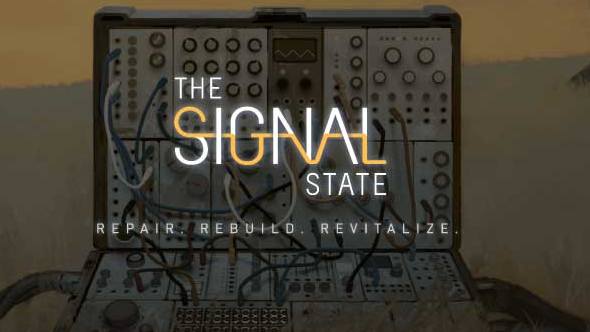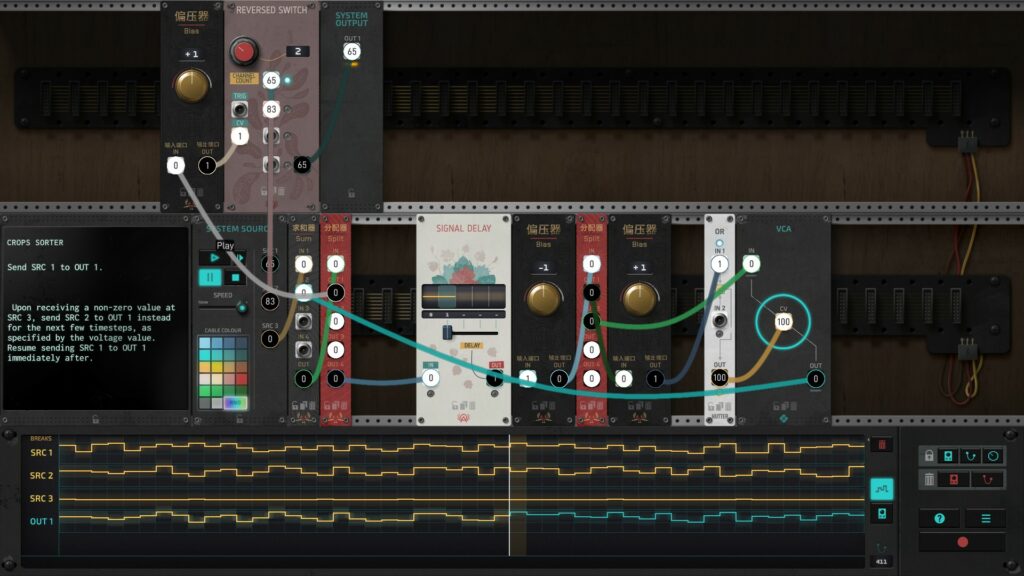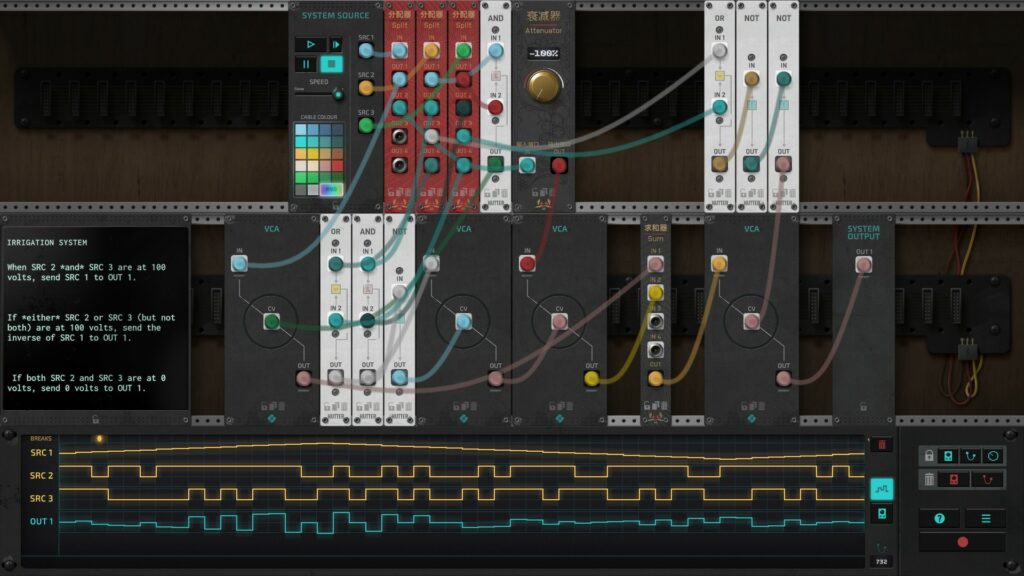
Developer: Reckoner Industries
Publishers: The Iterative Collective, indienovaGames
Platform: PC
Tested on: PC
The Signal State – Review
Programming games have been around for a good while, but are now seeing an increase in popularity thanks to the rising importance of the field. Out of the developers for the genre, Zachtronics is a particular standout with games such as SHENZEN I/O and Magnum Opus, having even coined their own subgenre, Zachlikes. The Signal State very much fits into this classification with its visual programming systems and complexity ceiling. That being said, how does it play?
Story
The game’s story follows the player, an unnamed technician, in a world where all machinery has stopped working. Allied with a colony of survivors, they will be tasked with getting a farm up and running to help provide supplies and slowly rebuild. Throughout the game, this story is told through short message exchanges with the colony leaders before each level, never getting particularly deep.
While not the best, the narrative is serviceable enough to provide a setting, although it does have a few plot holes. Alongside this, despite what the marketing material might suggest, whichever options players choose during dialogues don’t seem to affect the outcome of the story, which is ultimately left on somewhat of a cliffhanger.
Graphics
Due to the nature of the game, The Signal State’s graphics mostly consist of a handful of images reused throughout the whole game. That said, all of these are rather nice to look at, and they are not lacking in quality. That said, the modules could certainly be made more visually distinct in the selection rack, due to a few of them being almost identical at smaller sizes.
Sound
The game’s soundtrack is rather nice, being mostly comprised of relaxing synth tracks fitting for the overall theme. Other than this, The Signal State doesn’t feature much more than a few sound effects while testing connections, which provide the player with audio feedback to accompany the visuals.
Gameplay
Like other Zachlikes, the main genre The Signal State belongs to is that of logic puzzle games, including some programming components that are layered on top. As is usual for the genre, the core gameplay loop sees players solving problems from a provided set of instructions, in this case stating the desired voltage output for the contraption you’re building.
In order to achieve their goal, players will need to send their input signal through a series of different modules in order to parse the desired values. These modules include ones such as maximum and minimum comparators, signal delayers, and more. By combining these in different ways, signals will be able to be sent on command, filtered by voltage, etc.
However, players do not start the game with every single module. Instead, they are unlocked as the story progresses, their use being gated to whichever levels the game decides. Besides the story levels, the game also contains a series of optional ones, often posing harder or unique challenges. Upon finishing the whole story, players will be given the ability to retry previous sections with all modules unlocked, allowing them to obtain higher scores in the leaderboards or challenge themselves with new solutions.
With all this said, there are a few issues worth mentioning in The Signal State. The first item would be the aforementioned leaderboard system, which is soon revealed to include scores from players with and without all modules unlocked. What this entails is that players who have finished the game will have an unfair advantage over those who haven’t. It would have been better to have two separate leaderboards in place here, namely one for those who play it with the available tools at that point in the story, and those who have finished the game.
The other issue is more general in nature and applies to all players: it is extremely hard to keep the wiring clean. While it is possible to color wires on demand, this has to be done one by one instead of simply being able to select a module. Combined with the “gravity” applied to the cables, harder scenarios can often lead to absolute messes with no solutions available to regain a clear overview.
Conclusion
The Signal State is a good logic puzzle game that could serve as a good entryway into the genre thanks to its relative simplicity compared to others. Nonetheless, as is common for the genre, this doesn’t mean the puzzles are easy, and they will require lots of patience to beat. The Signal State is fairly priced at €16,99/$19.99/£15.49 with 5 to 10 hours of gameplay depending on skill, and the announced sandbox and level editor modes set to release later on.
Personal Opinion
“Playing through The Signal State was pretty entertaining, although I definitely felt the burnout when getting stuck on certain levels. This game can be rather obtuse with its instructions at times, with the hint system feeling a bit useless. Besides that, I mostly enjoyed my time with the game, even though I have to say I felt no interest in replaying the levels after finishing the game, and the leaderboards didn’t captivate me either.”
The Signal State - Review,









No Comments